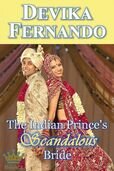“India was One” by An Indian is a book that makes you think and that is filled with interesting information. The latter is provided in sentences or whole paragraphs in italic that follow the introduction of a word, food, custom or traditional concept. This sort of interrupts the reading flow, but is also a good way of learning more about India and of emphasizing how different yet unquestionably Indian all of it is. Whether you know most of it—like me—or not, these side notes are well-written and help to paint the bigger picture.
To me, the story is divided into three parts. The first third is reserved for introducing the two protagonists Jai and Kaahi and getting to know them. They meet at campus, fall in love, spend joyful days with friends and family and get married. All of it reads almost too good to be true. There’s no conflict at all, not even lying dormant. That, however, is just as well, because it will highlight the contrast between the rosy life before and the terrors after the division of the country. The author also uses this part to establish a cast of people who come from all corners of India, always illustrating their background. Everything is part of the puzzle that seems impossible to piece together after the separation of the two Indias.
The second third focuses on the happy couple’s life after they migrate to the United States of America. Being half Asian and half European, I could relate to or at least imagine a lot of what they went through. They are still happy, but now they have to face new experiences and the reader can sense a storm cloud looming. Some chapters deal with Jai and Kaahi traveling to Europe, which was fun to read for me and portrayed as credibly and well-researched as the rest of the book.
The last third hits you hard. From one moment to the other, smiles and success and affection turn to tears and fear and separation. You can hardly believe that you’re reading the same book. The author shocks you with his all too real description of a country and its people torn apart cruelly. Husband and wife are left stranded in the two halves of India, fighting a losing battle to be reunited. Everybody’s suffering is palpable and you are gripped by the story, racing toward the end that is uncertain until it swoops down upon you. This last part of the book is the one where the writing is most powerful.
There are some nice little touches to “India was One” that had me like it even more. First, there are the sketches that are full of life and details and fit the exotic image of the book. Second, you’re treated to some Hindi words spelled out in the Devanagari script, including phonetic translation and English meaning. Third—if my basic Hindi skills don’t fail me—the hero’s name means “victory” (Jai) and the heroine’s name means “story” (Kahaani), which is just perfect considering their story and role.
Due to the unusual writing style and the conflict occurring so late, this might not be a read for everybody. I, however, really enjoyed it and would recommend it especially to everybody who wants to get to know more about India. Asians / Indians will also find a lot to treasure and ponder. I understand why the author prefers to remain anonymous.
India was One - An Indian
More recommended reads:
Beauty is for Suckers - M.A. Carson
Entangled Moments - Dori Lavelle
Kingdom Come - Aarti V. Raman
























 RSS Feed
RSS Feed